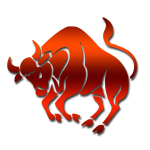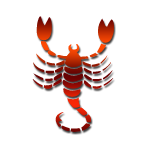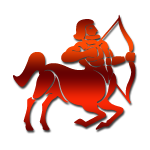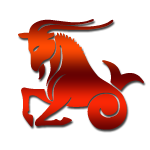Paid Services
Importance of Navamsa Chart in Astrology
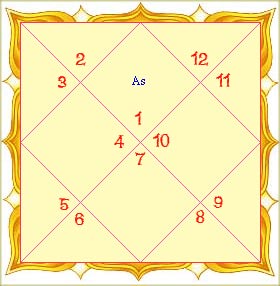
By S N Rao
The Navamsa is the most important sub-division of the Hindu Astrology. Usually the Rasi Chart and the Navamsa Chart are tagged together in the South. The Navamsa techniques properly studied and carefully utilized can enable one to foresee most of the events in a native's life. Navamsa divisions are magnified projections and as such the findings from Rasi Chart can be understood easily.
Navamsa is 3°-20' x 12 = 40° (i.e. a cycle from Mesha to Meena Navamsas). A cycle of 12 Navamsas will repeat after an interval of 40° each. So Mesha Navamsa will repeat 9 times in the Zodiac. Similarly, all other Navamsas from Vrishabha to Meena will repeat nine times. In Western Astrology 40° aspect is known a "Nonile Aspect.
Some combinations and techniques that are commonly used in navamsa for prediction are –
In navamsa Chart, the trine positions of planets - 120° have same numerical Navamsa, same constellation lord and the lords of these trines are considered to be friends.
If the Moon's Navamsa at birth in the case of bridegroom" happens to be the 88th one, when counted from that of the bride, it indicates intense evil (in married life). Similar result will also be the case when the Moon's Navamsa happens to be the I08th when counted from that of the bride.
At the time of performance of marriage ceremony (Pani-Grahana) no planet should be in the 55th Navamsa, as reckoned from the rising (Ascendant) Navamsa at that time.
If in the birth-chart even one planet is there in the 5th Navamsa (i.e. of the middle Navamsa in that sign) then it makes the native a man of status.
The 36th Navamsa from the Moon's Navamsa is Karmabham. The 64th Navamsa from the Moon's Navamsa is
Sanghatika. The 72nd Navamsa from the Moon 's Navamsa is Vainashika. The 96th Navamsa from the Moon's Navamsa is Manasa. When malefic planets transit through the above four Navamsa the native suffers from mental anguish, loss of wealth, and such diseases which give much physical pain. When transit conjunction of major planets takes place in the above Navamsa in a nativity, either from the ascendant on the Moon or the Sun, major outstanding event takes place in one's life for good or bad.
It is also found in practice that the transits of slow moving planets through the above Navamsa from the remaining
five planets" Rahu, Ketu and extra Saturnine planets, are also productive of results of a significant nature favourable or unfavourable. Similarly transits through the Navamsa of fast moving planets, such as the Sun, Mars, Mercury and Venus, also give results, which are of small magnitude.
Mundane events, such as cyclones, earthquakes, excessive heat, very heavy rains, devastating noods, excessive cold, droughts, big-fires etc can be predicted by the Navamsa position formed by the fast-moving planets such as the Sun. Mars, Mercury and Venus with the four slow moving planets in transit. This principle can be applied to Sayana positions also and the effects of transit of planets can be studied from the Sayana horoscope. The same principle can be extended to even political predictions by referring to the horoscopes of the nations.
Any planet if posited in a Navamsa owned by the 8th house sign in Rasi chart is said to be Nidhanamsasthah. It is considered to be highly malefic.
Ascendant Navamsa is known as the rising Navamsa or Udit Navamsa or Lagna Navamsa. The first Navamsas in Chara signs; the middle Navamsas in fixed signs and the last Navamsas in Dwiswabhava signs are known as Vargottama Navamsas. The natives born in these Navamsa are leaders in their own right. Planets transiting the Navamsas of cuspal points of various houses produce their full effects at that time. Of all the cusps the 10th cusp; next the 4th one and lastly the 7th one, are of utmost importance in descending order. Very often, it is found in practice; transit of Rahu or Ketu through the above referred Navamsas causes tragic happenings during unfavourable Dasa periods.
The degrees 21 °, 14°, 24°, 7°, 21 °, 14°, 24°; 7°, 21 °, 14°, 24° and 7° in Mesha and the following signs respectively are called Pushkaramsas. They are useful for fixing Muhurta for auspicious activities in general.
To determine the timing of events in the life of an individual a technique to progress One Navamsa equals one year of life is also used. In this technique the number of Navamsas from the Navamsa occupied by any planet up to the Navamsa occupied by the ascendant will give good or bad results to the native. Progression of navamsa theory will give the year in which an event, good or bad is likely to take place. But during that particular year, in which month and on which day the event occurs is a subject of deep research.
Transit of planets using navamsa is a very important and reliable tool in timing events in the life of an individual. Navamsa transit is a transit of a heavenly body through the zodiacal arc of 3°20', known as Navamsa or 1/4th pada, mainly of slow-moving planets such as Saturn, Jupiter, Rahu and Ketu. Transit of planets in Navamsa will trigger positive or negative events in the life of the individual when it passes through the birth position of planet in the rashi.
 Best quality gemstones with assurance of AstroCAMP.com More
Best quality gemstones with assurance of AstroCAMP.com More
 Take advantage of Yantra with assurance of AstroCAMP.com More
Take advantage of Yantra with assurance of AstroCAMP.com More
 Yantra to pacify planets and have a happy life .. get from AstroCAMP.com More
Yantra to pacify planets and have a happy life .. get from AstroCAMP.com More
 Best quality Rudraksh with assurance of AstroCAMP.com More
Best quality Rudraksh with assurance of AstroCAMP.com More
Get your personalised horoscope based on your sign.


